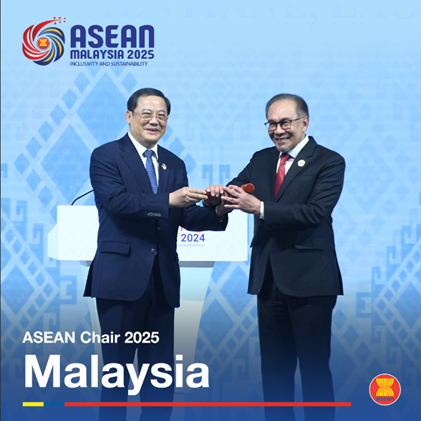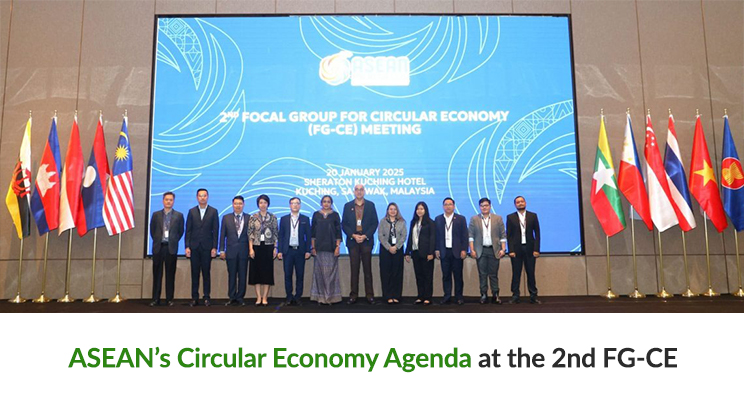As environmental challenges escalate globally, the circular economy has emerged as a sustainable solution to tackle resource depletion, waste management, and economic inefficiencies. The 2nd ASEAN Framework for Circular Economy (FG-CE) Meeting marks another crucial step in the region’s commitment to transitioning from a linear “take-make-dispose” model to a regenerative economic system.
The meeting brought together ASEAN policymakers, industry leaders, and sustainability advocates to discuss strategies for integrating circular economy principles into regional policies. This article explores the key takeaways from the event, ASEAN’s progress in circular economy adoption, and the challenges ahead.

The Case for a Circular Economy
ASEAN’s Environmental and Economic Challenges
Southeast Asia faces rising waste pollution, resource scarcity, and climate risks, making the shift to a circular economy more urgent than ever. Key statistics underline the severity of the issue:
- ASEAN countries generate 31 million tonnes of plastic waste annually, with only 25% properly managed.
- The region’s economies rely heavily on resource-intensive industries such as manufacturing, agriculture, and construction.
- ASEAN’s rapid urbanization and population growth have intensified waste generation and carbon emissions (ASEAN Centre for Energy).
Circular Economy Benefits
- Reduce waste and pollution through eco-friendly production and consumption patterns.
- Foster green innovation by encouraging businesses to design sustainable products.
- Boost economic resilience by minimizing dependency on virgin resources and enhancing supply chain efficiency.
- Create new job opportunities in recycling, remanufacturing, and sustainable product design (Ellen MacArthur Foundation).
Takeaways from the 2nd FG-CE Meeting
The 2nd FG-CE Meeting built upon ASEAN’s commitment to circularity as outlined in the ASEAN Circular Economy Framework (2021) (ASEAN Secretariat). Key discussions revolved around:
1. Policy Development & Regulatory Frameworks
- Strengthening national circular economy roadmaps among ASEAN member states.
- Establishing a regional policy framework to align circular economy goals across countries.
- Enhancing Extended Producer Responsibility (EPR) schemes, particularly for plastic waste (OECD report).
2. Business Innovation & Private Sector Collaboration
- Encouraging industries to adopt circular business models, such as product-as-a-service and closed-loop manufacturing.
- Highlighting successful initiatives, such as Thailand’s BCG (Bio-Circular-Green) Economy Model, which promotes biodegradable materials and renewable energy (Thailand Board of Investment).
3. Financing & Investment in Circular Solutions
- Exploring green financing mechanisms to support circular economy startups.
- ASEAN works with multilateral banks and international investors to fund waste-to-energy projects (Asian Development Bank).
4. Regional Collaboration & Cross-Border Initiatives
- ASEAN’s engagement with global sustainability programs such as the EU Green Deal and United Nations Sustainable Development Goals (SDGs).
- Plans to develop a regional circular economy knowledge hub to share best practices and case studies.
Challenges & The Road Ahead
Despite progress, ASEAN faces several hurdles in fully implementing a circular economy:
1. Lack of Policy Standardization
- Circular economy policies vary significantly across ASEAN nations, making regional cooperation challenging.
2. Financing Gaps & Limited Investment
- Many small businesses lack the capital to adopt circular practices.
- Green finance solutions such as sustainability-linked bonds and circular economy funds are needed to bridge the gap (Green Finance Platform).
3. Consumer Behavior & Awareness
- Many consumers in ASEAN still prioritise low-cost over sustainable products.
- Educational campaigns and behavioural nudges are essential to promote responsible consumption (UNEP Sustainable Lifestyles).
The 2nd ASEAN Framework for Circular Economy Meeting has underscored the region’s commitment to reshaping its economic future through sustainable practices. As ASEAN faces growing environmental challenges, the circular economy presents a transformative opportunity to reduce waste, enhance resource efficiency, and drive long-term economic resilience. But for these initiatives to succeed, it will take more than just policy changes — it requires active participation from governments, businesses, and consumers.
The progress made thus far is promising, but it is clear that the road ahead is one of collective action. Governments must align policies, businesses need to adopt circular business models, and consumers should embrace sustainable consumption. Now is the time to accelerate these efforts and bring the circular economy to the forefront of ASEAN’s agenda.


